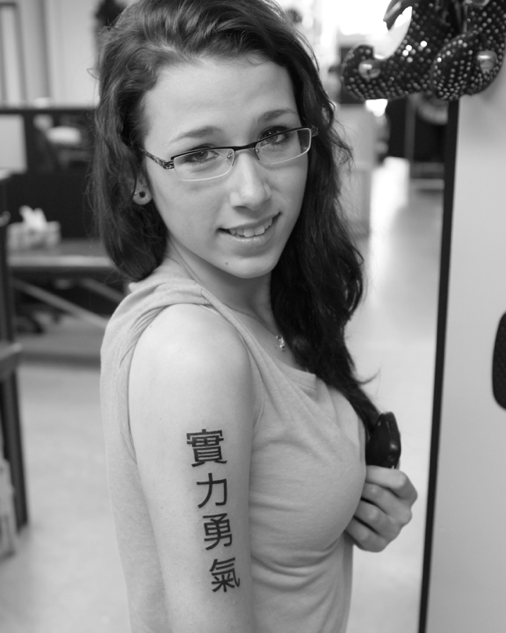Elephants and Sex
It is very curious that, with all the sturm und drang that accompanied the long-overdue release of Ontario’s Sex Education/Health Curriculum, no one acknowledged the elephants in the room. Yes, elephants plural. There are at least two, which might help us understand some of the alarm.
Armand Grobler
What are those elephants? One is the clear but unstated fear that acknowledging sexual activity to teens might license sexual activity among them. That telling teens about “No means no,” same-sex relationships and—especially—“I like it like that,” might introduce sexual activities to teens who had not considered them. That it might encourage teens who are at the experimental stage of sexual activity to experiment further. That it might send the message to sexually active teens that their activities are normal.
Research, by the way, does not bear this out. Sexual knowledge does not increase sexual activity, just as education regarding other contentious issues, such as alcohol or drug use, do not increase consumption.
And believing that not telling teens about sex at school will prevent them from becoming sexually aware or active is delusional. Teens learn in many more places than school classrooms. Their Twitter and Facebook feeds; text, Vine, Snapchat, Tumblr messages, lunch room and hallway conversations are also classrooms rich with sex-ed learning.
learnfromsam.com
Schools’ sex-ed messages may be concerning for some parents, but are they any more concerning than the risks of having their children sexually abused, extorted or diseased? If we believe that alcohol education effectively reduces alcohol-related accidents, errors in judgment, etc., thus protecting our children, or that nutrition education effectively reduces obesity and anorexia, why not a similar faith in the benefits of sex ed? Isn’t parents’ Job #1 to provide the best possible support for their children, and doesn’t this include reducing life’s risks? Isn’t that why parents research the best schools, homes, vehicle crash records, winter jackets, sports equipment, vitamins, etc.?
What better choice than an informed choice?
But maybe it’s NOT an elephant, or maybe it’s the parents’ elephant rather than their teens’ elephant. Research suggests that students who are not ready for sexual activity will remain unready; those who are experimenting—a necessary part of maturing—will continue to experiment with caution and informed awareness; and those who are active will revise their activities based on better information. What better choice than an informed choice?
Might the objections to the curriculum indicate yet another aspect of this elephant: that parents ultimately do not trust their children to act responsibly if they know about sex? That sexual knowledge can and will effectively undermine their family values? Or are they just so uncomfortable about talking sex with their children that their personal discomfort drives them to ignore the topic altogether?
And what of the SECOND elephant? That elephant is media literacy, because many parents’ concerns about their children’s attitudes and behaviours towards sex arise from and are carried by media messages. Media influences—and therefore media literacy—are referenced throughout the new curriculum, so media literacy is therefore an essential—if unacknowledged—component.
Many media communications—texts, posts, videos, movies, news reports, songs, TV shows—are highly sexualized. Their collective effect might suggest that sexual activity is regular among much of the teen population. But these are constructed versions designed to attract and hold audiences, NOT representations of truth. The Health curriculum mandates explorations of media messages, e.g., Gr 6 C1.3 identify factors that affect the development of a person’s self-concept; ‘Factors’ include media messages. And C3.3 assess the effects of stereotypes, including homophobia and assumptions regarding gender roles and expectations. ‘Stereotypes’ are contained in and distributed by media messages. The expectations cited above are just a few of many.
Consider, please, the cautionary tales of Amanda Todd and Rehtaeh Parsons. Ms. Todd was abused and victimized by a man in Holland she never met who extorted sexual imagery from her, then used that imagery to destroy her reputation. Ms. Parsons was abused and victimized by classmates she knew who posted a video of her rape, also destroying her reputation. Both of these women committed suicide. Both of them might have survived if they had better understood sexual politics and ways that media can be used against people. Both suffered their abuses while in grade 9. If sex-ed and media literacy were going to help them, it would have had to occur at least in grade 8 if not earlier.
Media versions of sexual attitudes and behaviours need to be explored regularly in the Health curriculum. Health classes must invite students to explore and analyze their media environments and messages to determine how they are influencing attitudes and behaviours and assess where they deliver accurate or suspect sex information.
So now the big questions: How will Health and Phys Ed teachers learn to support their students’ understanding and appreciation of media messages and their potential influences on sexual attitudes and behaviours? How will the Ministry and school boards help them become media literate enough to assess students’ learning?
The Association for Media Literacy has experienced teachers who are willing and able to assist and would be glad to help. Students and teachers need to have the best information, critical thinking and media literacy skills so that they can identify, confront and tame the elephants.






